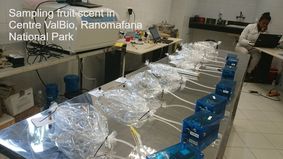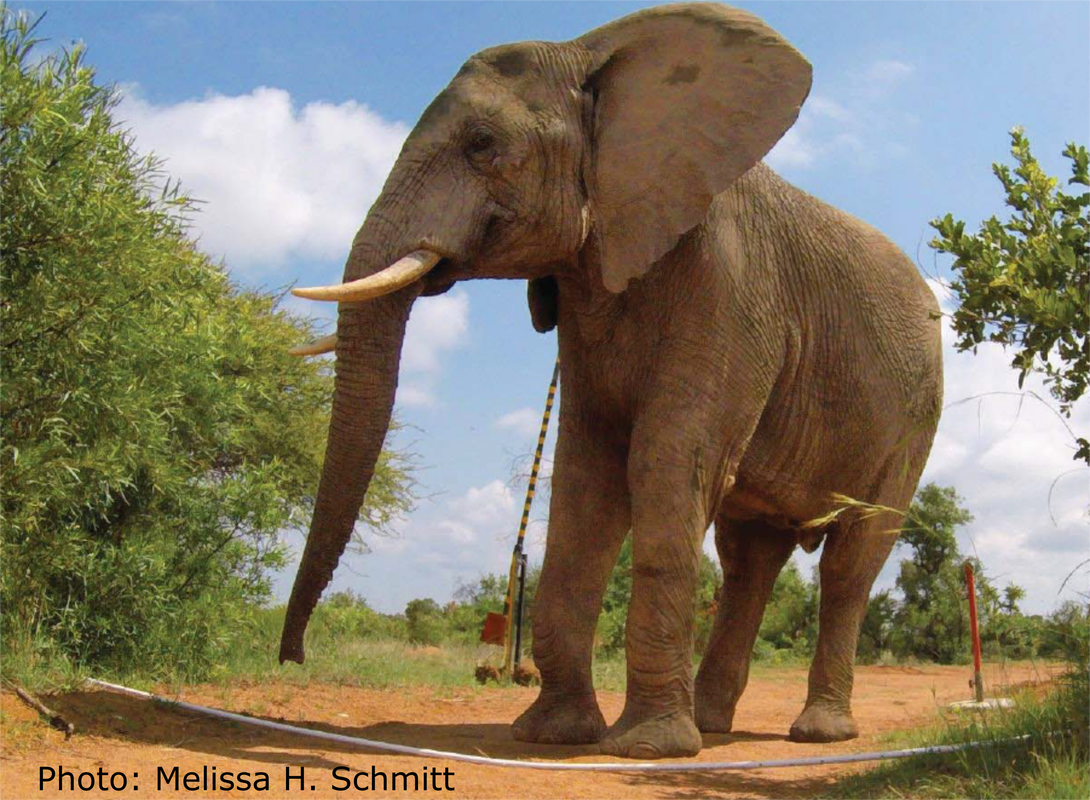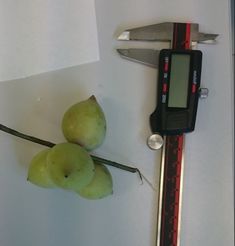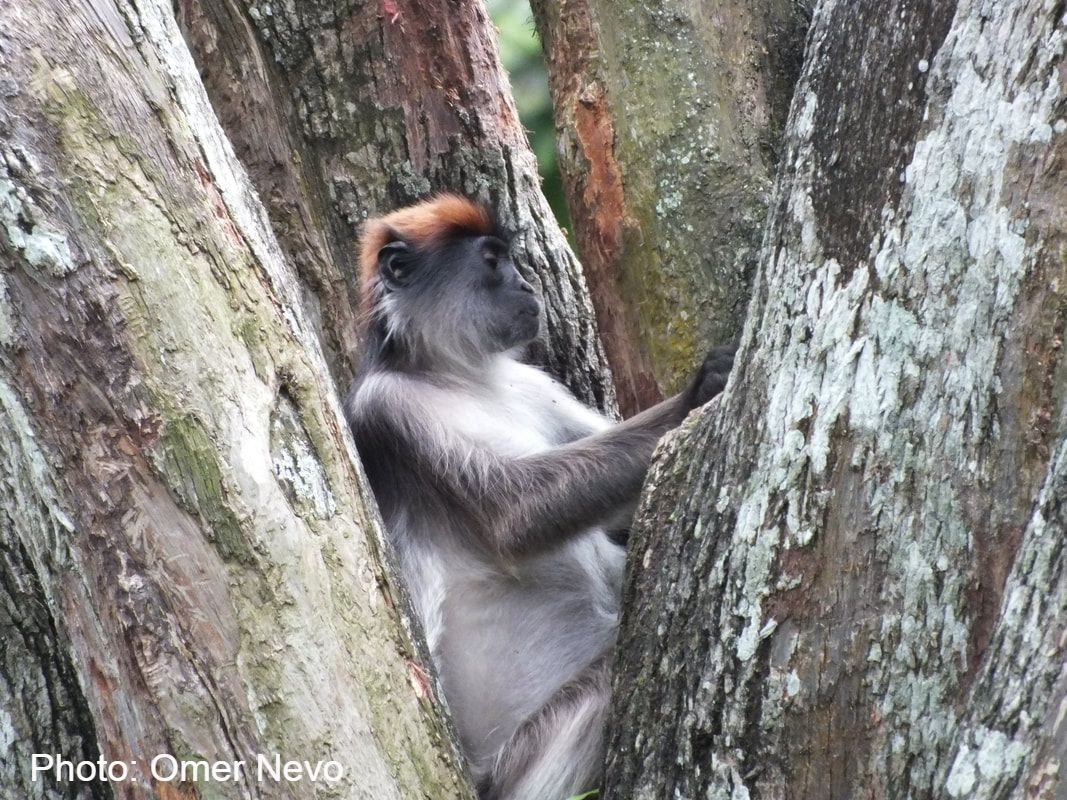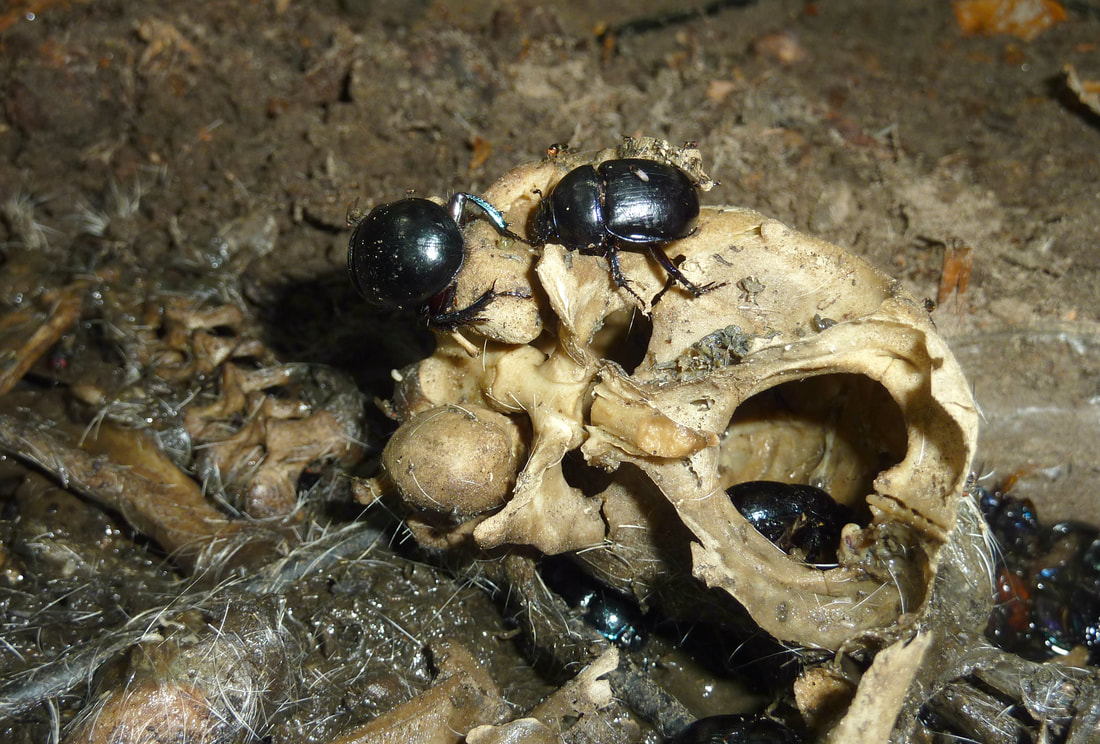Ongoing projects
Chemical coevolution of animals and plants
|
The project examines how chemical signals have evolved as a communication channel between lemurs and plants. It employs a comparative approach, in which the scent chemistry of multiple plant species is compared to examine where chemical signals may have evolved and for what function. In addition, more detailed chemical analyses and behavioral studies of lemurs are conducted to identify how animals exploit fruit scent and by extent what selection pressures they may exert on plant evolution.
The project is conducted in Ranomafana National Park, eastern Madagascar, and funded by the German Science Foundation (NE 2156 /1-1) Aliphatic esters as reliable signals for fruit qualityThe project focuses on a single group of fruit scent components: aliphatic esters. These compounds are very common in fruits and are responsible for what many perceive as "fruity scent". Crucially, their biosynthetic precursors are alcohols, whose presence is related to fruit maturation. The project employs chemical profiling of fruits and behavioral experiments of vervet monkeys (Chlorocebus pygerythrus) to test whether aliphatic esters are reliable signals for fruit quality, and whether animals are capable of using them in the process of food selection.
The project takes place at Kibale National Park, Uganda, and is funded by the German Science Foundation (NE 2156/1-2). Elephant conservation through chemical ecologyHuman-elephant conflict is a growing problem across Africa and south-east Asia. The most acute problem is crop raiding by elephants, which destroy the livelihood of subsistence farmers, but can also destroy commercial farms. In both cases, the result affects food security in developing countries, as well as economic development. In this project, my colleagues and I study the chemical ecology of African elephants to identify chemical compounds that naturally deter them. Our goal is to produce cheap and safe mixtures of chemicals that mimic natural deterrents which can be applied as "invisible barriers" to prevent crop raiding, thus promoting elephant conservation and empowering local communities.
In collaboration with Dr. Melissa H. Schmitt and Dr. Kim Valenta The evolutionary ecology of fruit traitsPlant-animal communication is a complicated process which entails communication on multiple channels. In addition to their sense of smell, animals rely on visual and tactile cues, and these traits are also subjected to constraints and selection pressures independent of animal behavior. This project takes a broader approach to examine the complex interactions between various fruit traits such as fruit color, scent, morphology, hardness, nutritional content and others.
Food selection in folivorous primates: proximate mechanisms and ultimate functionsAt first glance, folivores appear to live in a resource-unlimited environment. Yet they are in fact selective with regards to the species they feed on, the particular leaves they consume and even the individuals within a plant species on which they feed. The project explores how folivorous red colobus monkeys (Procolobus badius) use visual, tactile and olfactory cues to identify high-quality leaves.
The project is led by Dr. Kim Valenta and is funded by the National Geographic Foundation (WW-163R-17). Necropig projectThe project studies the influence of land use intensity on the decomposition rate of dead mammals at landscape and local scale. It joins ecologists, zoologists, chemical ecologists, microbiologists and geneticists to further understand how natural decomposition processes are affected by human activity. I have been responsible for chemical analyses of piglet carcass samples.
|

